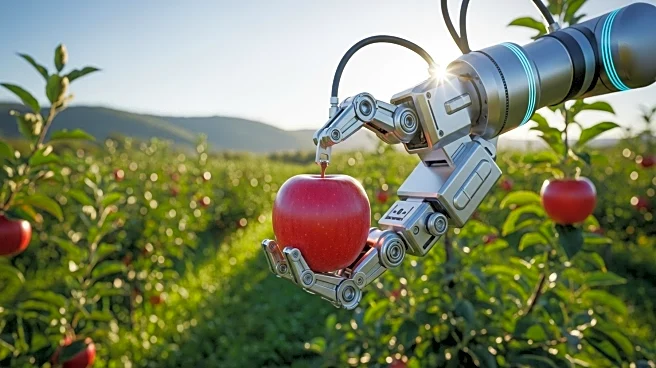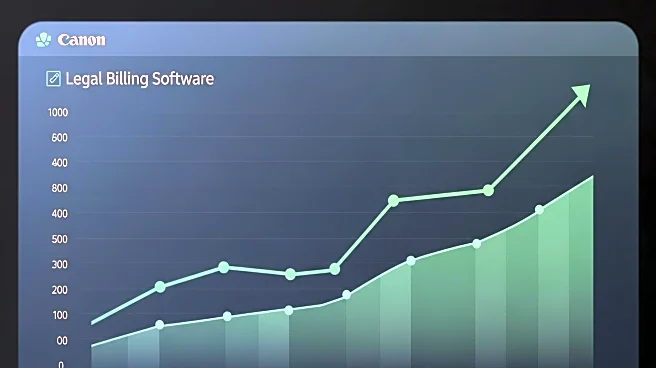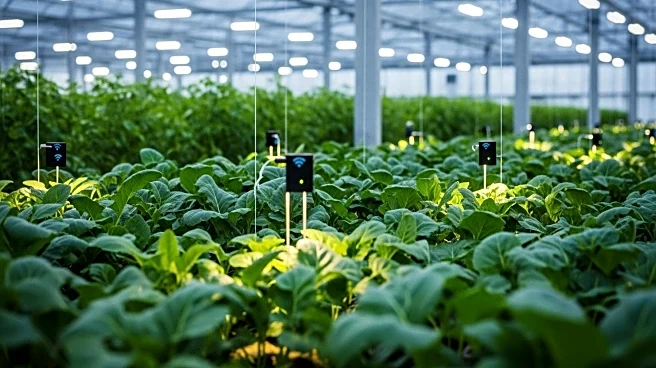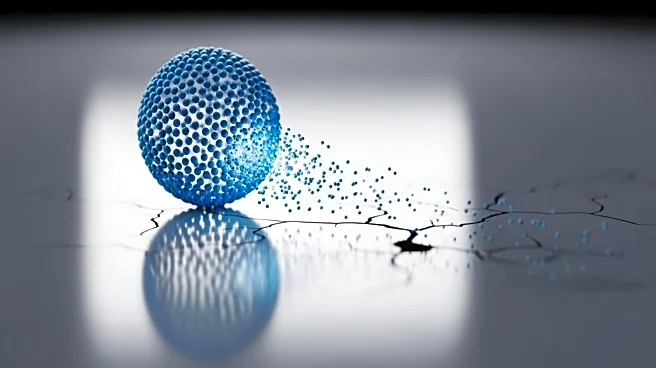What is the story about?
What's Happening?
The global self-healing materials market is anticipated to grow significantly, reaching USD 17.49 billion by 2033, according to a report by Straits Research. This growth is driven by a compound annual growth rate (CAGR) of 22.6% from 2025 to 2033. Self-healing materials, which can autonomously repair micro-damage, are increasingly being applied across various industries, including construction, electronics, transportation, and medical sectors. Europe currently holds the largest market share, while the Asia-Pacific region is expected to experience the fastest growth due to industrialization and foreign investments. The construction sector remains the dominant application area, with self-healing concrete and asphalt being used to enhance infrastructure durability and reduce maintenance costs.
Why It's Important?
The expansion of the self-healing materials market is significant for several reasons. It represents a shift towards more sustainable and cost-effective solutions in construction and infrastructure, reducing the need for frequent repairs and maintenance. This can lead to lower carbon emissions and improved environmental sustainability. Additionally, advancements in self-healing technologies are opening new opportunities in high-performance engineering and medical applications, potentially revolutionizing how materials are used in these fields. Companies in the electronics and transportation sectors are also investing in these materials to enhance product durability and performance, indicating a broad impact across multiple industries.
What's Next?
The continued development of self-healing technologies is expected to unlock further applications in various sectors. Ongoing research and development efforts aim to overcome current limitations, such as microcapsule capacity and the irreversible nature of capsule rupture. As these challenges are addressed, the market could see even greater adoption of self-healing materials. The construction industry, in particular, is poised to benefit from these advancements, with nations investing heavily in sustainable infrastructure projects. This could lead to increased demand for self-healing concrete and polymer materials, further driving market growth.
Beyond the Headlines
The integration of self-healing materials into infrastructure projects not only reduces maintenance costs but also enhances structural safety and resilience. This has ethical and environmental implications, as it supports the development of sustainable cities and communities. Moreover, the use of self-healing materials in medical applications, such as implants and prosthetics, could improve patient outcomes and reduce healthcare costs. As the technology evolves, it may also lead to new standards in material science and engineering, influencing future research and development in these fields.
AI Generated Content
Do you find this article useful?













